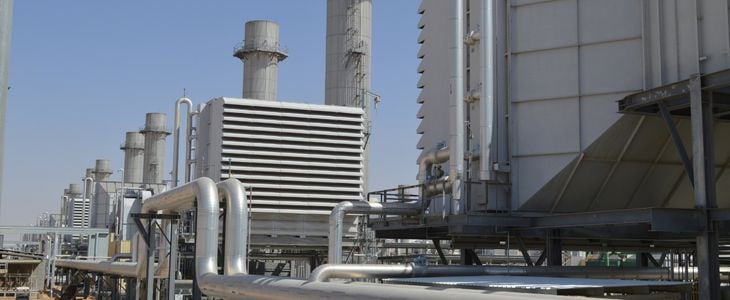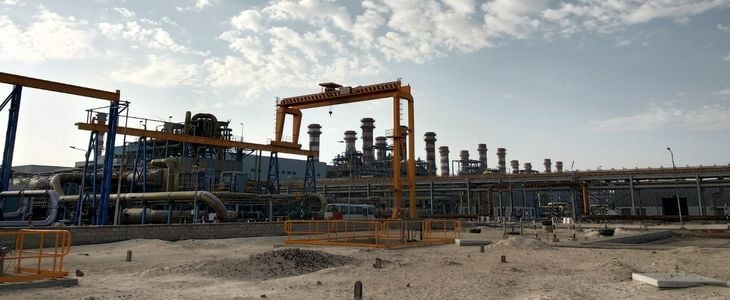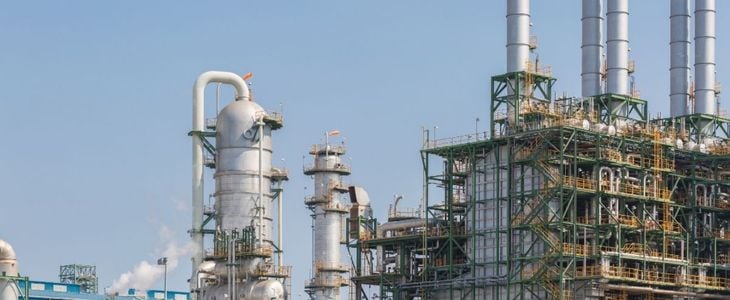As the Power Generation Industry strives for providing cleaner, and increasingly robust energy, achieving turbine efficiency in thermal power plants can make a significant difference in such a competitive, demanding market.
Gas Turbines and GT Power Plants remain a reliable, efficient solution for power generation, and any attempt to increase their efficiency can only provide satisfactory effects and guarantee this model continues to lead the industry.
From this perspective, at ARANER we’ve compiled a short but exhaustive guide on how to enhance turbine efficiency in a thermal power plant. Keep reading to find out.
Transformations in the power generation industry: why strive for turbine efficiency
- Competition for resources is increasingly high, as more companies make the move to this model of power generation
- Work in remote locations and with extreme weather conditions is common. This increases pressure to maximize efficiencies, as some elementary operations remain costly and difficult.
- A growing demand for non-fossil fuel solutions has led to experimentation with other sources. In such a context, innovation becomes a driving force for company success.
How to achieve turbine efficiency in thermal power plant
The first step to analyze turbine efficiency in thermal power plants is to understand how turbines work.
Gas turbines are volumetric machines, having constant volumetric air flows. As these machines’ power output is directly related to air mass flows and air density, air temperatures can greatly influence their efficiency and power output.
Higher ambient air temperatures (which equal a decrease in air density) mean a decrease in air mass flow rates and, as a consequence, a reduced power output produced by turbines. This phenomenon is inversely proportional: it also means that if ambient air temperatures can be modified as desired to reach higher densities, turbine power output and efficiency will increase.
Gas turbines are design at ISO conditions: 60% relative humidity and 15 ºC.
An obvious conclusion is that certain regions of the world can hardly provide such conditions. Additionally, peak demand periods for power plants usually coincide with times of the day where the hottest temperatures occur. In turn, this typically means that, at a time when gas turbines are demanded at their highest potential, they can experiment a decrease of their output to 30% of their nominao power.
In such scenarios, how to achieve turbine efficiency and gas power plant efficiency? This is where Turbine Inlet Air Cooling comes in.
TIAC: a definition
Turbine Inlet Air Cooling (TIAC) comprises a number of technologies that are devised to cool down air intakes for gas turbines, with the aim of augmenting their performance in terms of power output.

In other words, TIAC systems can counteract the negative effect of high ambient air temperatures, so that inlet air temperatures remain constant. As a result, power outputs are maximized and continuous, even when ambient temperatures change.
There are a number of Turbine Inlet Air Cooling technologies that have been used throughout the years.
Traditionally, the most used technologies have included fogging (using an evaporating spray of water); evaporative coolers (a wetted rigid media through which air passes); and compression chillers (which create a refrigeration cycle of cooled water).
More recently, some updated systems include absorption chillers (using heat as an energy source, thus can decrease operational costs if waste heat is used); and gas engine driven chillers (driven by natural gas or diesel).
The possibility of using Thermal Storage Tank systems is a late addition to the increasing performance of TIAC technologies. This state-of-the-art model stores excess cold water or ice that is produced during turbine operations but that is not immediately employed. It can then be used when needed, such as peak periods, providing extra cooling capacities and enhancing TIAC technologies in achieving turbine efficiency.
The role of TIAC (Turbine Inlet Air Cooling) in turbine efficiency
They can maximize power output and improve energy efficiencies of both new and existing gas turbine power plants, and they have been successfully introduced in combined-cycle, simple-cycle, cogeneration and mechanical drive applications.
All in all, the goal of Turbine Inlet Air Cooling is to increase turbine power output by providing cool air. The power output increase can be in the range of 20 to 35 %. Efficiency is also increased. However, this change is not that significant, as it has shown to only achieve efficiency improvements of around 2 to 3%.
In other words, analyzing turbines and TIAC systems from a siloed perspective cannot provide the efficiency boost that companies are looking for today to stand out in this competitive industry.
This is why at Araner we’ve worked to understand the issue of turbine efficiency from a “macro” point of view, leading to outstanding results.
For instance, it’s common for power generation and electrical grids to be composed of a series of uneven plants in terms of efficiency. Some of the most efficient often include combined-cycle, gas-turbine plants; some other less efficient or sustainable plants typically present open cycles, carbon plants or diesel-engine plants.
Looking at TIAC technologies from a global viewpoint will mean that TIAC systems are installed on the most efficient plants (so that their production is greatly improved) while production in less-efficient plants can be reduced, or even the number of hours of their performance.
This model can lead to very significant transformations in power grids, meaning global efficiencies can go beyond 10%. Additional benefits will often include a reduction of CO2 emissions, as the less efficient plants are often also responsible for an important volume of damaging emissions.

Benefits of improving turbine efficiency in thermal power plants
- Efficiencies are achieved. TIAC systems increase annual average output MW, providing a lower Price per generated MW compared with new equipment. In fact, GT Power Output increases have occured, ranging from levels of about 10% to 30% and avoiding fluctuations common to other systems reliant on ambient air conditions. Some studies have shown that the right TIAC technologies can enhance turbine efficiency by as much as 30%.
This efficiency is also significant when it comes to improving heat rates in gas turbines, thus achieving great performance but needing less resources and also reducing carbon emissions.
- Capital cost advantages. Chillers don’t need to be sized for peak cooling demand: they can be sized down, bringing in a number of advantages in terms of capital costs. These efficiencies can be achieved at a fraction of what other equipment costs, including a new GT generator. In fact, the capital cost of TIAC is calculated to be around one third of the investment on a new gas turbine. Additionally, it’s also a cost-effective solution compared to additional turbine installations for both CAPEX and OPEX.
- A source of reduced operation cost. TESTIAC (TIAC technologies combined with Thermal Storage Tank systems) present a refrigeration system with a smaller capacity, because they level cooling loads for off-peak hours. This means energy consumption is reduced, thus resulting in decreased operation costs.
- Avoidance of parasitic loads. As chillers can operate only during off-peak hours, parasitic loads are eliminated from on-peak periods. In other words, turbine output can be varied without the costly heat rate penalty typical of part-load turbine operation models.
- Able to provide benefits for auxiliary systems. This includes transformers and generators and their need for refrigeration.
- Carbon Credits. TIAC technologies and turbines have been recognized as a green technology and thus can access several carbon credit benefits.
- Quick, friction-free installation. The installation of TIAC systems is simpler and faster than installing a new turbine
TESTIAC: Araner’s proposal for achieving turbine efficiency
At Araner, we work to become leading partners for state-of-the-art energy systems and cooling and heating plants. As such, we help our clients through our design, manufacturing, engineering, procurement and construction activities in order to achieve the greatest efficiencies possible in personalized projects around the world.
Our TESTIAC technology works to help gas turbine power plants to produce power cost-effectively even in locations where extreme ambient temperatures are common (for instance, desert locations).
In order to do so, our TESTIAC System generates cooled water during off peak hours (looking for reduced operational costs), which is then stored in specifically-designed tanks. The water can then be used on demand for varying inlet air temperatures through TIAC technologies, which include our very own Adaptative Temperature (AAT) system, a model for selectable and constant inlet air temperatures. This provides a constant cooling temperature for the gas turbines and generates increased efficiency and power outputs.
The result is power producers can boost their turbine power output to ISO nominal-rated outputs or even higher values.

The Aramco Case Study: Araner’s know-how put to work
Throughout our experience, at Araner we’ve worked to ensure each project is met with the highest standards and efficiencies, all driven by state-of-the-art technologies. This statement can be proven in a number of case studies. Regarding TIAC and turbine efficiency, our case study of Aramco in Saudi Arabia can do the talking.
Aramco is well-known as the biggest Oil & Gas Company in the world, owing to having the largest crude oil reserves as well as the highest daily oil production. Based in Saudi Arabia, their power plants include a total electrical generating capacity of 770MW and turbine models General Electric Frame 7 EA and Frame 7 FA. They are known for their experience in power augmentation systems and the ability to comply with Oil & Gas standards.
When Aramco approached Araner, they had installed 2 new gas turbines and detected the need to improve their efficiency and maximize their power. From that point, we established a collaboration to design a model that would bring in the desired benefits.
We suggested the Turbine Inlet Air Cooling (TIAC) system, and moved on to design and fabricate the most adequate equipment considering different real-life site conditions and scenarios.
One key success factor was our design for a TIAC plant with a modular concept. This means the main equipment was installed within a module, which can then be transported, insead of on-site. As a result, we were able to apply the most appropriate quality controls and testing, as well as the most advanced cutting and machining tools. Additionally, this concept reduces site works to a minimum, avoiding operation disturbances and only needing connection to existing utilities and field piping connections.
The result was a highly successful efficiency-enhancer system that also took into account the project’s particular needs and the company’s wish for a quick installation process.
Want to learn more about turbine efficiency in a thermal power plant and how TIAC technologies are helping companies achieve it? Download our free ebook about Turbine Inlet Air Cooling (TIAC) and discover the potential of this system for your company.










